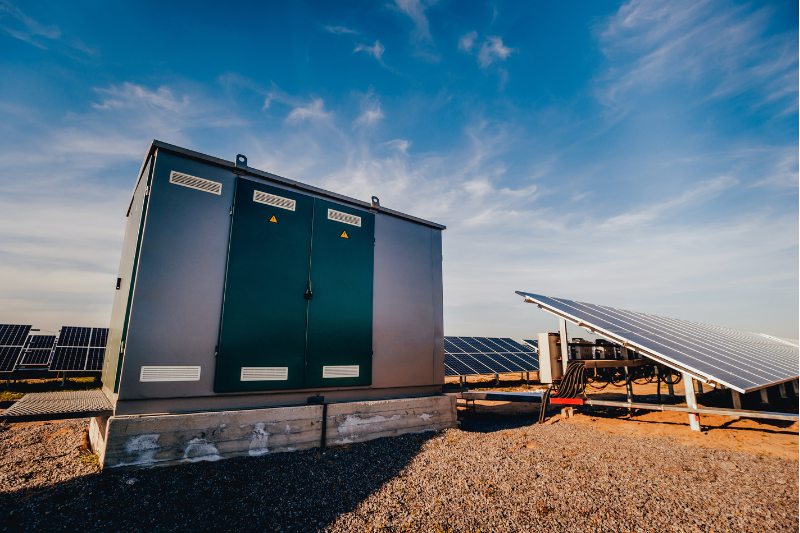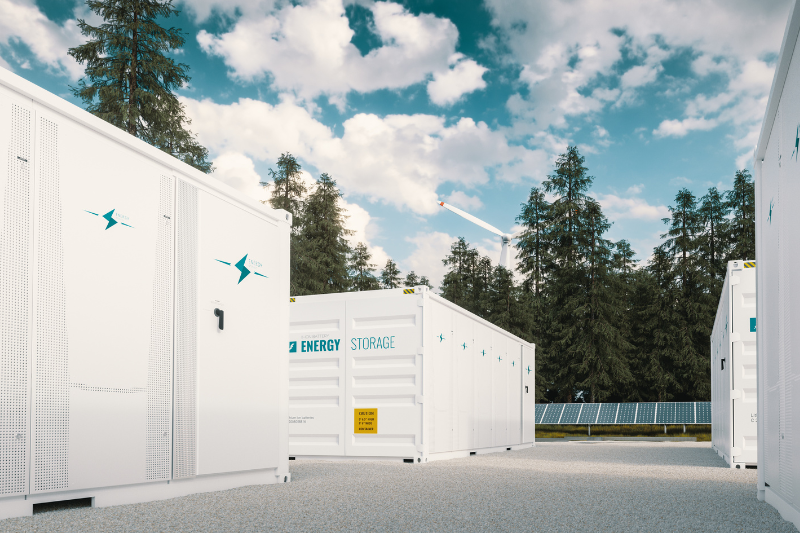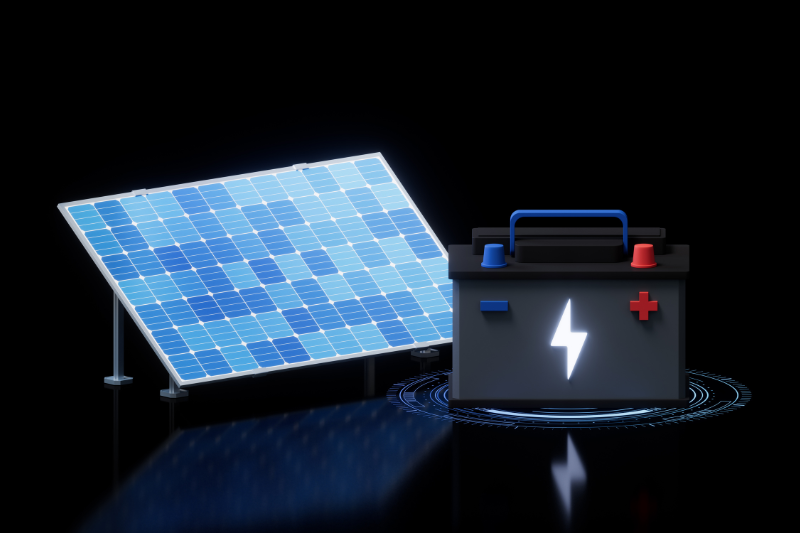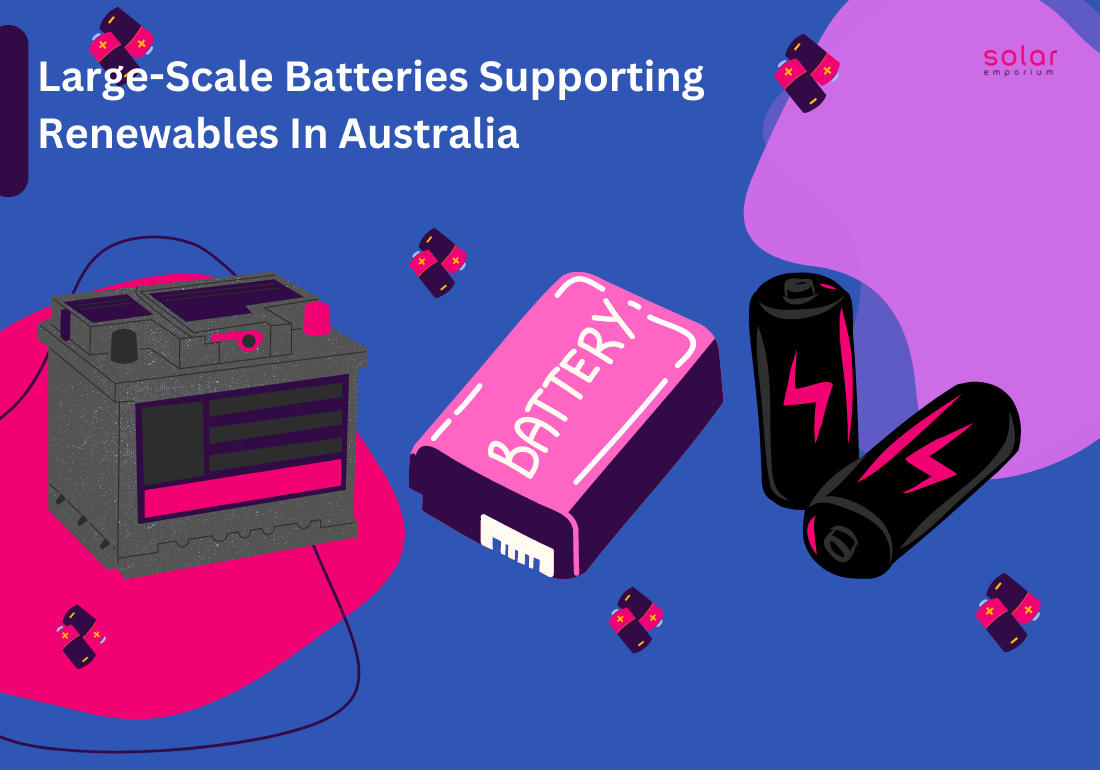Large-scale or grid-scale energy storage is crucial in advancing the transition to a more renewable energy system. Batteries and pumped hydro are the two most common forms of large-scale energy storage.
Here, we will focus on how large-scale batteries support renewables in Australia. Australia has demonstrated the potential of wind and solar as clean and affordable renewable energy sources.
Effectively managing the weather-related variability of these sources requires efficient power storage solutions. Energy storage involves using a chemical process or pumped hydro system to store electrical energy for later use.
Soon, energy storage will revolutionise global energy usage, offering consumers greater flexibility, reliability, and efficiency in their energy consumption. It also helps to stabilise the supply of renewable energy from sources like solar and wind.
What Are Batteries?
Large-scale batteries are also known as grid-scale batteries. But what are batteries in this context?
Batteries are a technology for energy storage, utilising chemicals to absorb and release energy as needed. The most commonly used battery chemistry for electricity storage is lithium-ion.
When coupled with renewable energy generation, batteries can store excess energy during periods of low demand and release it during peak demand. These systems offer flexibility in energy supply.
Unlike other storage and generation methods, batteries stand out for their responsiveness, capable of turning on and off in fractions of a second, thereby helping to maintain grid stability.
Large groups of batteries, called grid-scale or large-scale battery storage (LSBS), can be significant power generators connected to the electricity transmission system.
Home batteries can be installed on a smaller scale to provide backup power and operate collectively in Virtual Power Plants (VPPs).
As battery technology continues to evolve and costs decrease, their utilisation of renewable energy is expected to expand in the coming years.

Energy Storage In Australia
Australia has witnessed significant developments in energy storage. Construction of sixteen large-scale batteries, totalling over 595 MW of capacity, was underway by the end of 2020.
Numerous utility-scale battery projects were announced, with the New South Wales Government committing to four new large-scale batteries under its Emerging Renewables program.
On the other hand, In June 2016, the Victorian Government introduced the Victorian Renewable Energy Target (VRET) aims to achieve 25 per cent renewable energy by 2020 and 40 per cent by 2025.
This commitment was later enacted into law in October 2017. Renewable Energy Action Plan (REAP) was established to reach these targets. And it focuses on three key areas:
- Supporting sector growth
- Empowering communities and consumers
- Modernising the energy system
By increasing renewable energy capacity, Victoria is promoting a stable and reliable energy system and making strides in reducing greenhouse gas emissions. The state aims for a 15 to 20 per cent emission reduction by 2020, ultimately achieving net-zero emissions by 2050.
Household interest in batteries increased, with around 40,000 batteries installed in 2020. South Australia led the way with SA Government’s Home Battery Scheme, followed by NSW through the Empowering Homes battery loan program.
Large-scale batteries, comprised of thousands of lithium-ion cells, function similarly to the batteries we use daily. They can provide power to the electricity grid, offering flexibility and stability to the network. Embracing energy storage can drive a transition to cleaner energy in the future.
The Technology of Energy Storage
Various electrochemical technologies are utilised and continuously developed worldwide to store battery energy. These technologies encompass lithium-ion, sodium-ion, and molten-state batteries like sodium-sulphur and flow batteries.
As advancements are made, and production costs decrease, battery storage becomes increasingly competitive commercially.
Large-scale batteries typically consist of multiple components, including a battery unit or enclosure, an inverter, and a transformer that may be internally or externally mounted. The enclosure requirement depends on the technology used and the desired output.
Large-Scale Batteries Supporting Renewables
Large-scale batteries play a significant role in supporting renewables in Australia by addressing the nature of renewable energy sources such as solar and wind.
These batteries are designed to store excess energy generated during periods of high production and release it when renewable generation is low or unavailable. Here’s how they are supporting renewables in Australia:

Storing Excess Energy
Smoothing Power Supply
Grid Stability
Large-scale batteries contribute to grid stability by providing rapid response services. They can respond quickly to sudden changes in energy demand or supply, helping to balance the grid and prevent blackouts or disruptions. They can react quicker than other technologies.
In contrast to conventional power generation methods that may take hours to reach maximum output, batteries can almost instantaneously adjust to wind or solar power fluctuations, ensuring a steady supply and uninterrupted electricity.
Batteries also serve as an excellent source of extra power during peak energy demand times, such as when people return home from work and increase their electricity usage.
Reducing Reliance on Fossil Fuels
Integration of Renewable Energy Projects
Time-Shifting Energy
Enhancing Grid Flexibility
Batteries offer flexibility to the grid operators, allowing them to manage fluctuations in renewable energy supply and demand effectively. This flexibility is essential as more renewables are integrated into the grid.
Large-scale batteries play a pivotal role in maximising the potential of renewable energy sources in Australia, contributing to a cleaner, more reliable, and sustainable energy landscape.
Charging during the day can absorb extra solar energy that is unused. This stored energy can then be shifted from midday to the high-demand afternoon hours to cater to customer requirements.
Although batteries can provide near-instant backup, their support duration is limited to a few hours with existing technology. However, as battery technology advances, it can provide longer backup periods at a reduced cost.
Why Is Location Important?
Large-scale batteries can be installed anywhere on the electricity grid. But to leverage existing infrastructure and minimise energy production costs,
Interestingly, a large-scale battery situated next to a power station doesn’t draw power from the station. These batteries operate independently, are grid-connected, and can continue functioning even when the adjacent power station is offline or has been decommissioned.
Why Choose Large-Scale Battery Storage?
Electricity storage comes in various forms, such as mechanical, pressurised, and electrochemical systems like pumped hydroelectricity, compressed air, liquid air, rail potential energy, and large-scale battery storage.
As part of the Renewable Energy Action Plan (REAP), a significant initiative is the implementation of large-scale energy storage facilities in central and western Victoria. These battery storage systems offer several benefits when paired with renewable energy sources:
- Contingency power during temporary supply losses, whether unexpected or regulated.
- Near-instantaneous stabilisation services to the grid during episodes of frequency imbalances.
- An alternative temporary electricity source, reducing reliance on expensive emergency gas-fired and diesel generators.
When combined with renewable energy, battery storage helps ensure a reliable and affordable energy supply. It can also decrease the occurrence of blackouts when there is less supply.
How Large-Scale Batteries Help You?
Large-scale batteries bring significant benefits to the grid, which ultimately impact consumers.
Large-scale batteries can release this energy during high-cost and high-demand periods by storing low-cost electricity during periods of excess supply. This helps to stabilise prices and reduce energy bills for consumers.
Additionally, when energy demands exceed generation, the stored electricity can be dispatched immediately. It acts as a peaking generation mechanism comparable to gas peaking plants. This efficient network further aids in keeping energy bills in check and reducing network costs.

Why Now?
The global energy landscape is rapidly changing due to advancements in energy technologies, consumer behaviour and preferences shifts. It is also helping the growing demand for cleaner energy sources.
Embracing a clear and well-planned transition to a clean energy future can ensure a smooth transition to renewable energy.
By learning from other countries experiences and adopting these methods, Victoria can emerge as a national leader in transitioning to a modern energy future. The challenge lies in incorporating new energy generation and utilisation methods while maintaining system reliability and affordability.
Benefits of Energy Storage Technologies:
Energy storage technologies can facilitate growth in areas experiencing network restraints. They also support on-demand energy requirements during the renewable energy transition.
Furthermore, energy storage is significant in enhancing competitiveness and increasing the supply of renewable energy as the industry expands.
By delivering renewable energy during peak demand times, large-scale batteries unlock more value, increase flexibility, and improve reliability in the energy supply.







